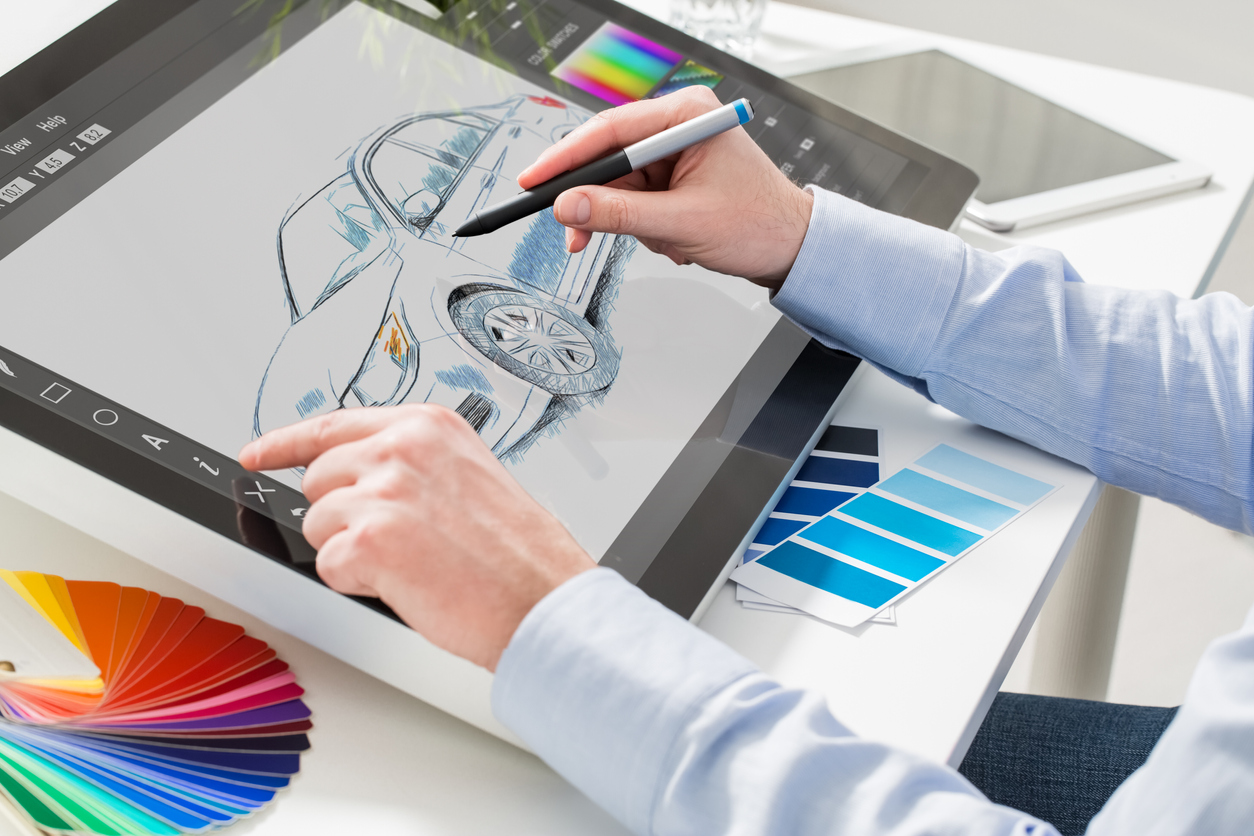

Today is National Live Creative Day and we’re super excited to bring you some content marrying two of our favorite things: All Things Automotive and The Arts! We’re highlighting some fantastic career options and opportunities that meet in the middle for the best of both worlds. Check it out on today’s blog!
Automotive Painting and Coating
When you’re shopping for cars, the process of choosing a paint color and finish is an important step. That’s because projecting your personality onto your ride is a big deal for many of us. We don’t just want something practical and usable, but something that really shows the world who we are inside. There’s also a large sector of automotive enthusiasts who love to customize their vehicle even further, by choosing a custom wrap or finish as a finishing touch to their interior and under-the-hood personalizations. Additionally, there are also those who are in the market for fully personalized mural work, airbrushing, gradients, and other designs. Transportation Equipment Painters are trained to operate special equipment, tools, and machinery to provide drivers with custom finishes, restoring paint on vintage vehicles, color matching, and tailoring personalized artwork. This involves use of a clean room, dust-free environments, and special paints and coatings. Workers in this field can apprentice with professionals, receive on-the-job training, or take workshops/classes to learn the process.
Automotive and Race Photographers and Photojournalists
Photographers who enter the Automotive Field may train for documentary photography, commercial photography, and sports photography. This allows them the flexibility to shoot photography for advertising, race-day documentary, photojournalism, car shows and model photography, and even cars within landscape photography. These days, modern photographers often prefer to select digital photography as their mode of choice, but some do still use film methods. These creative professionals will use digital cameras, computer software, technical lighting,and natural lighting to enhance the look of vehicles depending on their use. You might find their work on social media, in automotive advertising, magazine and print work, history books, and more! This field requires a lot of hands-on training, apprenticing with professionals, formal schooling, and ongoing education on new technologies. They may shoot indoors in curated studios, on site of filming or commercial locations, at race tracks or events, or at automotive shows.
Automotive Designers and Conceptual Designers
This career sits at the intersection of engineering, business, and design worlds. These are highly specialized and technically trained professionals specializing in industrial design. They’re required to have a thorough knowledge of engineering, mechanics, automotive production, automotive materials. Their job is to improve aerodynamics, ergonomics, and aesthetics of the automotive industry. This field not only involves those scientific and mathematical perspectives, but also fine art. These professionals include draftsmen, modelers and sculptors, digital and traditional illustrators and painters, and 3D CAD creators. Requirements of this specialized industry include at least a Bachelor’s Degree in Automotive Design, Industrial Design and/or Engineering. The formal “STEM” based training and education required is to be completed at technical schools or universities.
Graphic Design and Digital Advertising Design
Think about all of the ways you learn about new vehicles and shop for cars today. You may find digital ads on social media, print ads, short segments from content creators. Looking for promotional coupons and discount sales to get the best deal? Those were customized by a series of artists to match brand aesthetics and messaging. Both static and motion graphics have been designed and created by artists to appeal to modern consumers, and tell a story through the visual and technical arts. Each of these creative fields involve hands-on training as well as formal education to learn highly technical programs such as Adobe Photoshop, Adobe Illustrator, Final Cut Pro, 3D Modeling programs, etc. Designers must research trends, stay on top of modern communication methods, and stay in the know with rapid changes to venues such as social media. These designers incorporate traditional and digital art methods, multimedia and new media technologies, and the basic principles of design. Most have acquired either extensive field experience, and/or a formal bachelors degree in Art, Multimedia, Graphic Design, etc.
Other interesting avenues for creative minds to explore in the automotive industry today include but are not limited to: content creators, vloggers, fine artists, film and video editors, web developers and designers, art directors, logo designers, concept artists, product and packaging designers.


![[Facebook]](https://www.classickiaonline.com/blogs/294/wp-content/plugins/bookmarkify/facebook.png)
![[LinkedIn]](https://www.classickiaonline.com/blogs/294/wp-content/plugins/bookmarkify/linkedin.png)
![[Twitter]](https://www.classickiaonline.com/blogs/294/wp-content/plugins/bookmarkify/twitter.png)
![[Yahoo!]](https://www.classickiaonline.com/blogs/294/wp-content/plugins/bookmarkify/yahoo.png)
![[Email]](https://www.classickiaonline.com/blogs/294/wp-content/plugins/bookmarkify/email.png)



 Warranties include 10-year/100,000-mile powertrain and 5-year/60,000-mile basic. All warranties and roadside assistance are limited. See retailer for warranty details.
Warranties include 10-year/100,000-mile powertrain and 5-year/60,000-mile basic. All warranties and roadside assistance are limited. See retailer for warranty details.